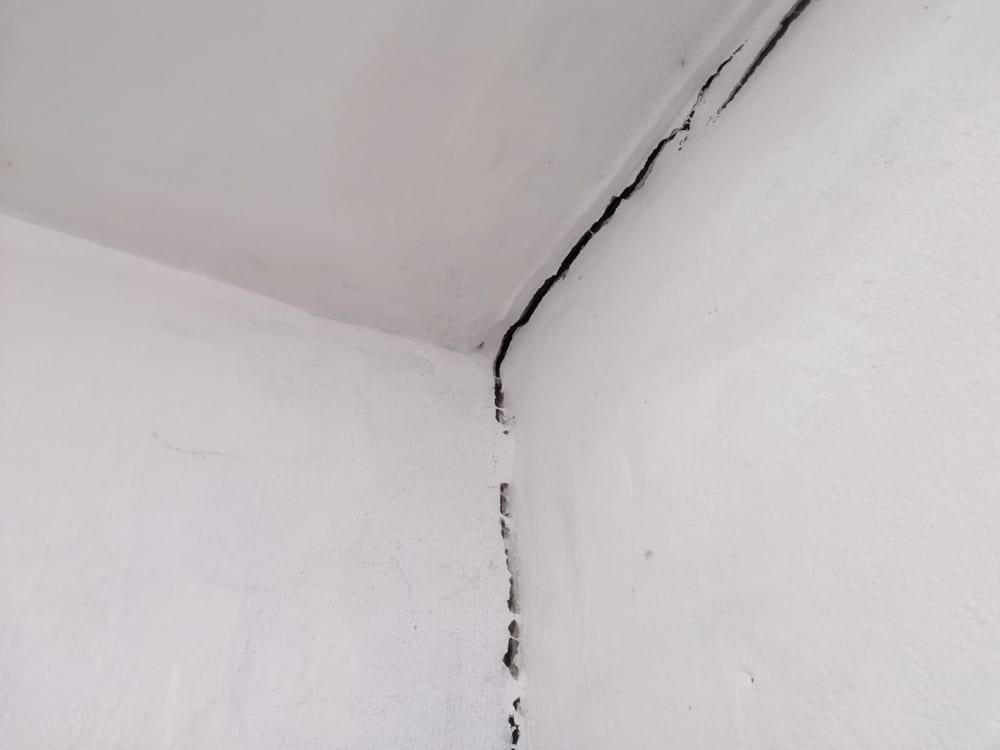What Causes Cracks In Walls And Ceilings? The sight of cracks in walls and ceilings can be disconcerting, leaving homeowners with many questions and concerns. These imperfections not only affect the aesthetics of your home but may also signal underlying structural issues. In this article, we will delve into the various reasons behind the causes of cracks in walls and ceilings, providing you with a better understanding of the factors at play.

Understanding Common Causes of Cracks
Cracks in walls and ceilings can manifest for a variety of reasons. It’s important to comprehend the underlying causes to determine the most appropriate course of action for rectifying the problem. Below are some of the most prevalent causes:
1. Settlement and Foundation Issues
One of the primary reasons for cracks in walls and ceilings is the natural settlement of your home over time. As the soil beneath your house shifts and compacts, the structure may adjust accordingly, leading to cracks. These cracks can range in size, from small hairline fractures to more substantial gaps. If you suspect settlement or foundation issues, it is crucial to consult with a professional who can assess the situation and recommend the necessary repairs.
2. Temperature and Humidity Fluctuations
Fluctuations in temperature and humidity levels can also contribute to the formation of cracks. This is particularly common in regions with extreme climate variations. When temperatures rapidly change, the materials in your walls and ceilings expand and contract, causing stress on the structure. Over time, this stress can result in visible cracks. Proper insulation and climate control can help mitigate these issues.
3. Poor Construction or Workmanship
In some cases, cracks in walls and ceilings can be attributed to poor construction or workmanship. If subpar materials were used or if the installation was executed poorly, cracks may develop over time. Insufficient support beams, uneven drywall installation, and other construction flaws can lead to structural weaknesses that eventually result in cracks.
4. Water Damage
Water infiltration is another common cause of cracks in walls and ceilings. Leaking roofs, burst pipes, high humidity levels, or even poor waterproofing can weaken the materials in your walls and ceilings, making them more susceptible to cracking. Timely addressing of water-related issues is crucial to prevent further structural damage.
5. External Factors
Sometimes, external factors can contribute to cracks. Construction work or excavation near your property, heavy machinery vibrations, or even nearby earthquakes can lead to shifts in the ground and result in cracks in your walls and ceilings. If you suspect such factors are causing the problem, consulting with a structural engineer is advisable.
Solutions for Cracks in Walls and Ceilings
Now that we’ve explored the common causes of cracks, let’s discuss potential solutions for addressing this issue:
1. Professional Inspection
Upon noticing cracks in your walls and ceilings, the initial step is to consult with a professional. Experienced contractors or structural engineers can assess the situation, identify the root cause, and recommend the appropriate repairs. They can also determine whether the cracks are merely cosmetic or indicative of structural issues, helping you make an informed decision on the necessary action.
2. Repairing Minor Cracks
For minor, primarily cosmetic cracks, you can often address them with simple repairs. This may involve patching the cracks with spackling or joint compound and subsequently repainting the affected areas. However, keep in mind that this approach may not address underlying structural issues.
3. Foundation Repair
If the cracks in your walls and ceilings are a result of foundation problems, you will need to invest in foundation repair. This can include underpinning, which strengthens the foundation, or other techniques to stabilize the structure.
4. Proper Maintenance
To prevent future cracking, performing regular maintenance on your home is crucial. Conduct routine inspections of your roof, check for leaks, and address any problems promptly. Maintaining a stable indoor climate can also help reduce temperature-related stress on your walls and ceilings.
5. Structural Reinforcements
In cases where structural integrity is compromised, additional reinforcements may be necessary. This could involve adding support beams, installing steel braces, or other measures to enhance the stability of your walls and ceilings.
Read too: How Much To Paint Ceiling And Walls
Conclusion
Cracks in walls and ceilings may raise concerns, but they don’t have to be a cause for panic. By understanding the underlying causes and seeking professional guidance, you can effectively address the issue. Whether through minor repairs, addressing foundation or water-related issues, or implementing structural reinforcements, you can ensure that your walls and ceilings remain in good condition for years to come. If you encounter such cracks, don’t delay—take action promptly to protect your home’s structural integrity.